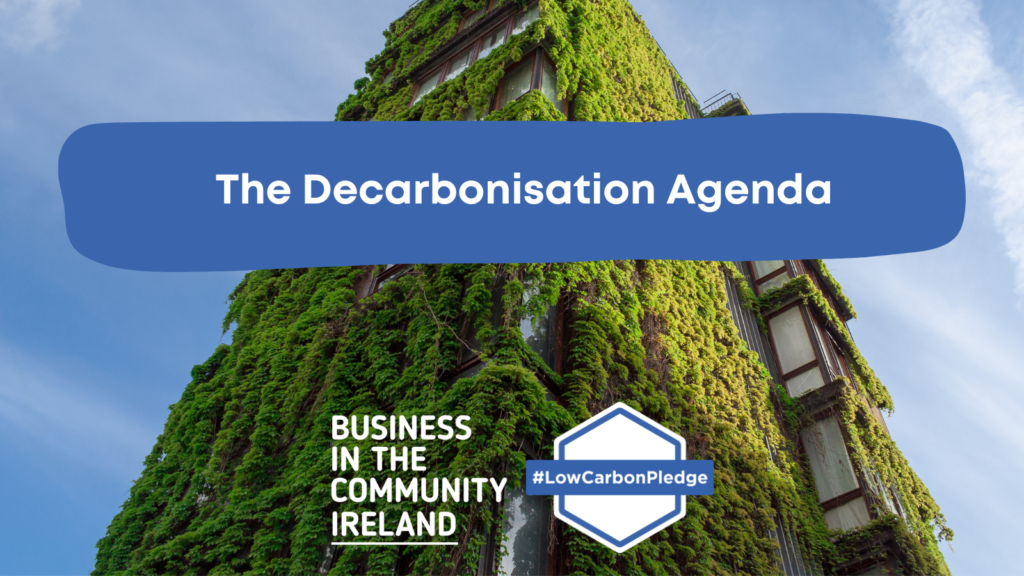Seven steps towards Net Zero
BITCI is supporting Ireland’s business sector in the transition to a low carbon economy with the Low Carbon Pledge – the 1st dedicated pledge generated by Irish business to set industry standards on sustainability and reduce carbon usage. A number of insights and observations have been collated while developing the latest Low Carbon Pledge report with PwC. In this article we share a summary of the seven steps that can help you drive your decarbonisation agenda towards Net Zero.
- Establish your true baseline
Before determining how quickly you can move on the pathway to Net Zero, accurately assess your full carbon footprint. This can be
done by using accepted methodologies to determine your scope 1, 2 and 3 emissions, to understand what the material factors are driving these emissions for each. This will provide you with clarity as to where the challenges lie.
2. Understand your operating environment
Once you have clarity on your emissions, it is important to consider your regulatory/commercial operating environment. What commitments are your peers making? What do your customers expect? Are regulatory or policy changes anticipated? This will inform how quickly you will need to adapt.
3. Set ambitious targets
Set an ambitious target. It will not always be possible to know exactly how you will achieve your net zero target. A robust review of your operating environment, and detailed examination of your emissions profile, will allow you to set ‘stretch’ but achievable targets. Set both long and short-term targets to provide appropriate milestones for your Net Zero journey. It is important to understand the risks and opportunities resulting from these targets. It is important to develop actions to mitigate and adapt to the identified priorities.
4. Senior leadership sponsorship & aligning your corporate strategy to Net Zero
Ensuring full senior leadership sponsorship is critical to a successful Science Based Targets journey. It is vital that everybody across the whole organisation understands the importance and the urgency of this agenda and how it aligns with the corporate strategy. Corporate strategies should be reviewed to ensure their full alignment with your Net Zero ambition. This will require decoupling the business from carbon intensive assets and activities.Companies will need to target climate-related opportunities, while at the same time ensuring sustainable growth in the short to mediumterm. This will require that your Net Zero targets are integrated into your strategic planning and risk management frameworks. Care should also be given to enhancing governance frameworks to drive the required change.
5. Report and verify
Targets should be underpinned by appropriate standards/ measurement methodologies, such as science-based targets, and attention should be given as to how best to report progress against your net-zero, and wider sustainability objectives. Having selected the appropriate reporting framework, such as Task Force on Climate-related Financial Disclosures (TCFD) or Global Reporting Initiative (GRI), define how you will communicate progress with stakeholders. In order to provide confidence to those outside the organisation, it is important to get external validation of your nonfinancial data. This will confirm the accuracy and credibility of your reporting through appropriate assurance, commensurate with the
criticality of this data to your stakeholders.
6. Engage your finance department
With supply chain decarbonisation underpinning Scope 3 emissions reduction ambition, commit to continuous structured engagement
with your suppliers and subcontractors, to help to deepen their ESG knowledge, increase collaboration and share more sustainable ways
of working.
Towards Nature Based Solutions
In 2025, BITCI will reveal the new Pledge which will contain a net-zero and nature requirement. Such requirements are viewed as integral to efforts to further raise the Pledge’s ambition. The IPCC Special Report on Renewable Energy Sources and Climate Change Mitigation notes that with the exception of solar and wind energy, the most effective strategies for mitigating CO2 emissions are all natural based solutions (NBS include ecosystem protection, restoration, and better management of farmlands. The IPCC found that these could mitigate between 11 to 14 billion metric tons of greenhouse gases per year.
As the low carbon pledge transitions towards net-zero and nature considerations, it is important that Pledge signatories are aware of these future
requirements and consider how best to prepare for them. When considering the role of NBS with a company’s carbon strategy recognition must be given to both the SBTi’s 5-10% rule on offsetting and the complexity and variability of NBS ecosystems and associated carbon accounting.
Find out more about the Low Carbon Pledge.



